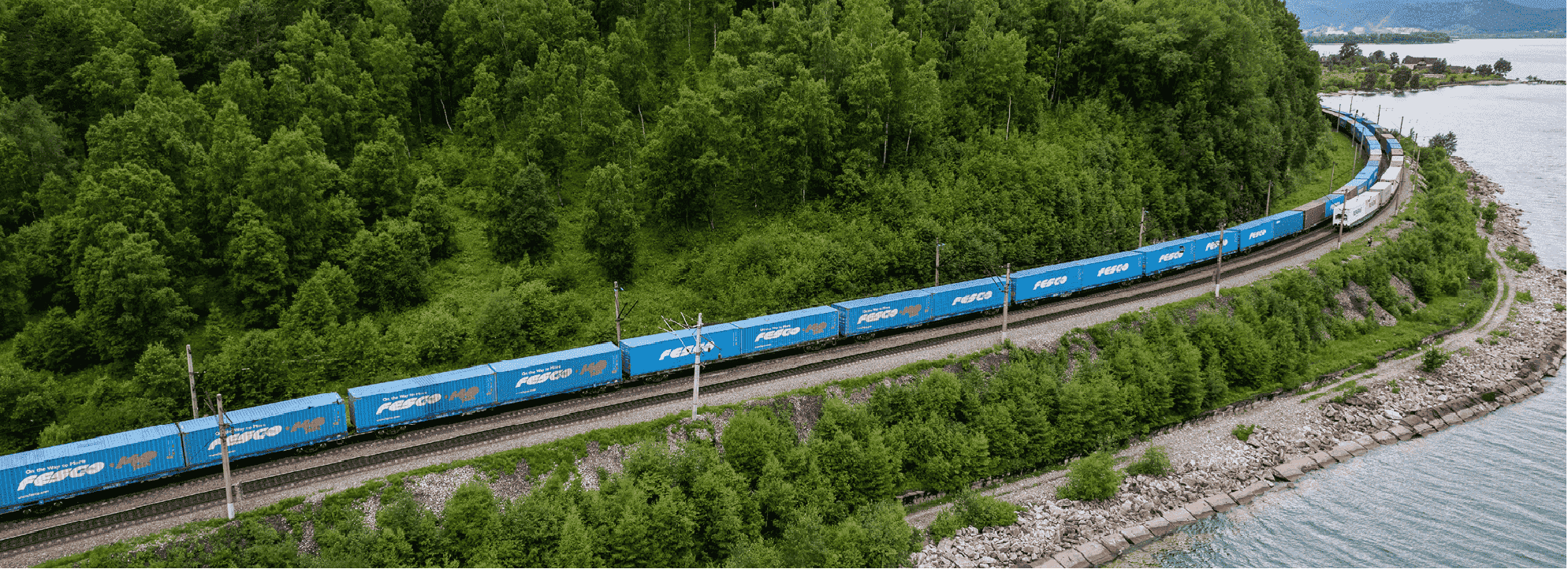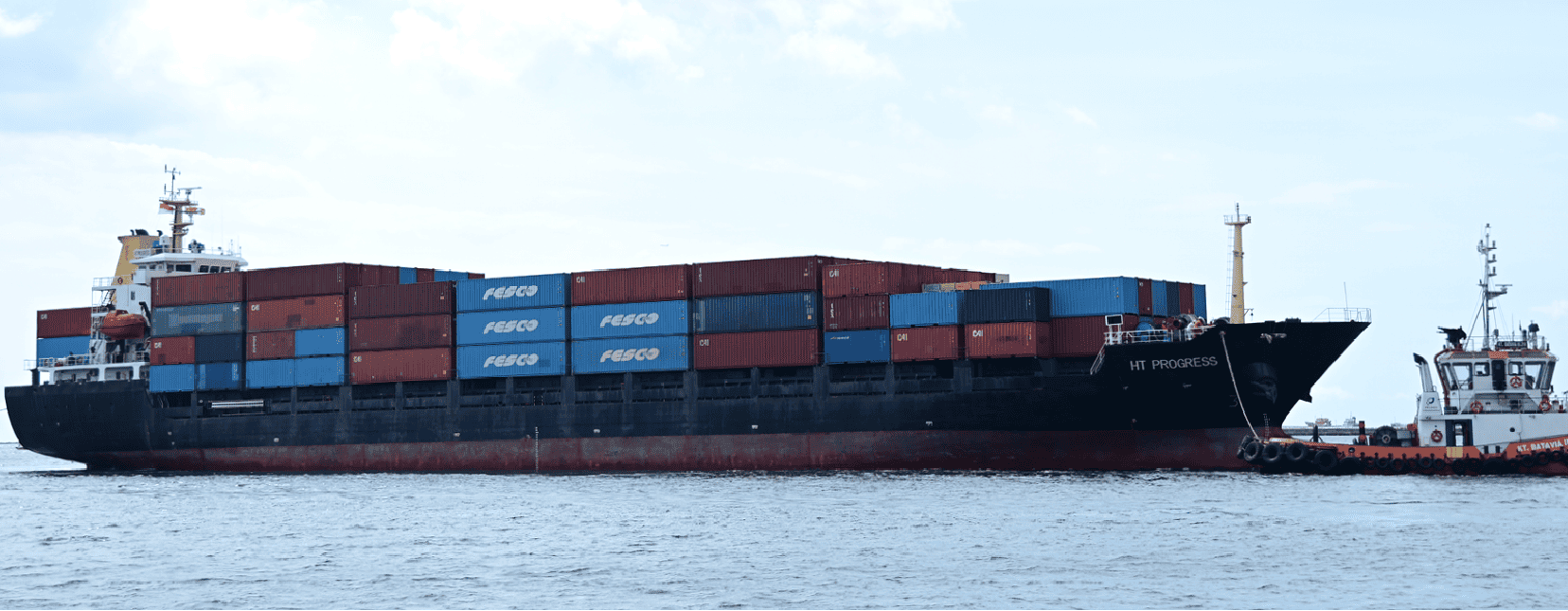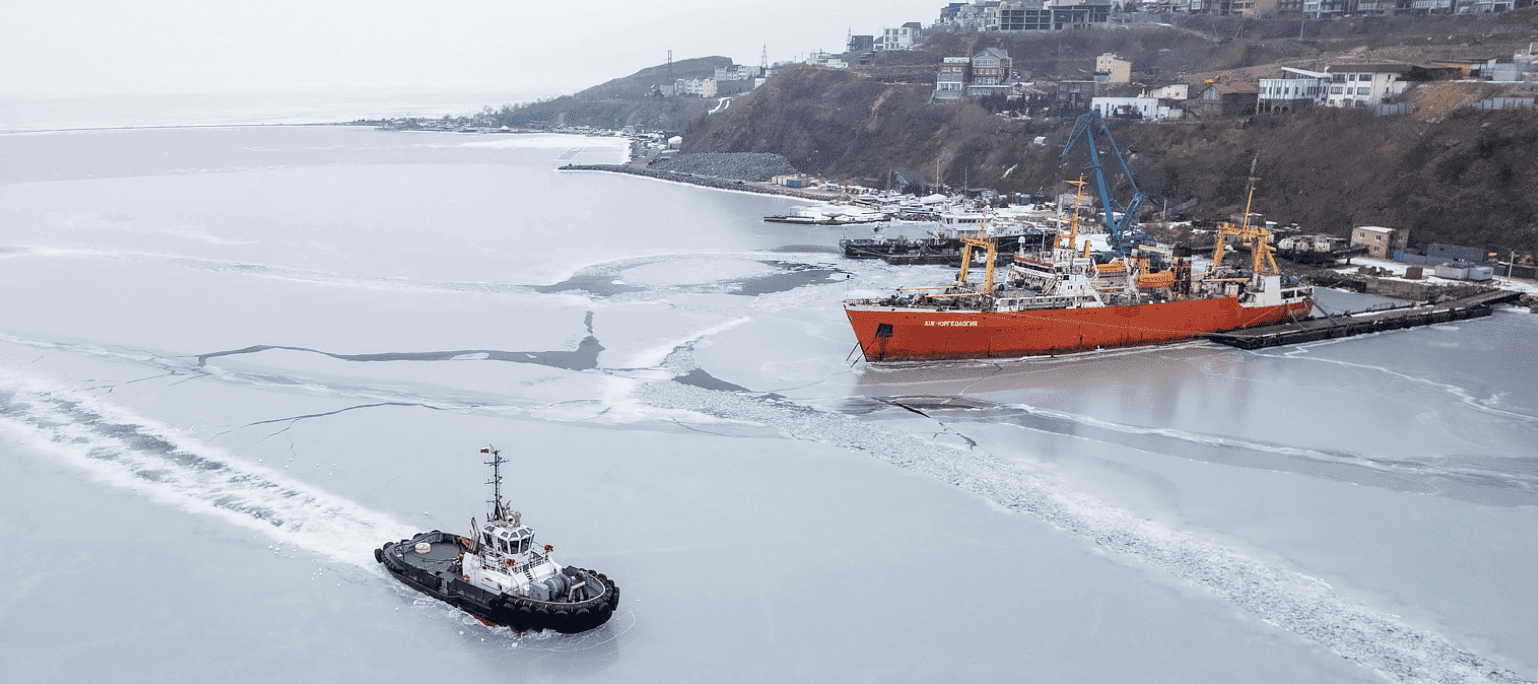Market overview and industry position
The world economy in 2024 developed against a backdrop of slowing recovery growth. National governments focused primarily on ensuring domestic market protection through two simultaneous strategies: implementing additional import duties and providing extensive government support programmes for domestic market development. These measures led to rising production costs.
Amid a global rise in production costs, the Russian economy grew by 4.1%, with final consumption of households as the key contributor and the consumer price index rising by 9.5% YoY.
Total freight turnover experienced modest growth – the decline in railway transport was effectively offset by increased transportation via other modes. Road freight turnover growth decelerated to 6.5% (down from growth of 22% in 2023). The consumer price index exhibited the greatest volatility (growing by 9.5%), reflecting the macroeconomic structure during a period of high interest rates. Additionally, a double wave of frost across Russia in May 2024 resulted in decreased agricultural production by year‑end.
Russia continued to maintain a trade balance surplus, with exports consistently exceeding imports throughout the year.
Export volumes have stabilised, whilst import flows remain more stable and predictable due to well‑established transport and payment routes.
Total merchandise trade for Russia reached USD 711.7 billion. Against a backdrop of declining commodity exports, imports showed 3% growth. Export geography is shifting, as the share of Europe shrank to USD 71 billion and businesses continue to refocus on Asia.
The primary driver of decline in the European direction is the continued fall in commodity exports. China remains Russia’s key trading partner in Asia, accounting for 41% of exports and 56% of imports. The decreasing share of China in trade with Asian countries reflects the development and growth of alternative markets in Southeast Asia.
One of the key limiting factors in foreign trade continues to be the challenge of settling with partners amidst ongoing sanctions pressure on the banking system.
In 2024, the Russian rouble’s importance in Russia’s international settlements continued to grow, whilst the share of settlements in US dollars and euros decreased for the second consecutive year. Throughout the year, foreign economic activity participants increasingly favoured the Russian rouble. For the first time, its use surpassed that of third‑country currencies, which maintained a combined share of 42% in Russia’s total foreign trade. This growth occurred at the expense of settlements in US dollars and euros. The share of settlements in other national currencies remained unchanged at 38% of all Russian foreign trade.
The key driving force behind changes is the Asian market, including China, India, Turkey, and Iran, which by the end of the year accounted for over 40% and 45% of export and import payments in Russian roubles, respectively. Significant shifts also occurred in trade with African countries, with 54% of transactions conducted using the rouble by the end of 2024.
2023 saw explosive growth in localisation and import substitution for numerous goods essential to the Russian market. However, Russian industry experienced a slowdown in 2024, as confirmed by the composite PMI index. By mid-2024, this indicator began declining, falling below the 50-point threshold in June to 49.8. This decline stemmed from currency fluctuations, inflation, key rate increases, and staff reductions. These economic factors negatively impacted investment activity, hindering the construction of new production facilities and reducing opportunities for launching large investment projects, as lending became prohibitively expensive under these conditions. Alongside factors affecting the manufacturing sector (manufacturing PMI), decreased purchasing power contributed to the composite index decline.
The persistence of a high key rate will continue to negatively impact imported goods volumes, generating stable demand for domestic industry products.

By the end of 2024, the global container market grew by 6.2% compared to 2023, reaching 183.2 million TEU (according to Container Trades Statistics). Shipments from Asia to North America demonstrated particularly significant growth – 12%. This increase stemmed from Asian shippers’ desire to dispatch goods before the formation of the new US government, which had previously announced its intention to review tariffs on Chinese imports. European container transportation volumes experienced a decline, particularly to the Indian subcontinent and Asia, while political tensions in the Middle East led to reduced transportation volumes from Europe to this region.
The year 2024 saw a substantial increase in TEU‑miles – the measurement of container transportation distance – which rose by 21% compared to the previous year. This growth was driven primarily by continuing instability in the Red Sea, creating shipping risks and causing vessels to navigate around Africa, thereby increasing transportation distances.
Freight rates doubled in 2024 relative to 2023’s average values. The first half of the year saw indices trending strongly upward due to equipment shortages in Asian ports. The trend reversed in the second half, with rates beginning to decline. However, the fourth quarter experienced another rise – a typical seasonal factor.
The global container vessel fleet expanded by 10% in 2024, primarily driven by the commissioning of vessels ordered during 2020–2022. In line with the ESG agenda, container operators actively ordered ships running on alternative fuels. These vessels accounted for half of the construction orders placed in 2024. According to Alphaliner, over 81% of new container vessel capacity under construction is designed to operate using environmentally friendly fuels.
Alongside active construction of new container vessels, time‑chartered vessels remain in high demand. The global fleet continues to experience a shortage of container ships with nominal capacity below 3 thousand TEU, leading to increased time‑charter rates against a backdrop of global trade fragmentation.
By the end of 2024, growth in the new Handymax and Feeder class fleet fell short of carrier demand for these vessels. Tightening vessel age requirements and growing regional trade will likely drive further fleet demand increases.
In 2024, the Russian container market slightly exceeded post‑pandemic 2021 volumes. This reflects the transformation of the national logistics system following the departure of major global players, changes in Russia’s trade structure, and continuing sanctions pressure from unfriendly countries.
The year 2024 saw continued intensive economic development, with the Russian container transportation market evolving under the influence of the following trends:
- development of new alternative markets and strengthened partnerships with friendly countries;
- localisation of automotive industry production within the country;
- modernisation and development of domestic industrial production and high value‑added products;
- growth in investment projects nationwide, particularly following the introduction of export duties on raw materials, making processed products more profitable (for example, grains and oilseeds);
- development of Russia’s agricultural sector and expansion of cultivated areas;
- new partnership agreements with Asian and African countries;
- transport infrastructure development.
The primary limiting factors negatively affecting Russian container market growth were the eastern railway infrastructure constraints and resulting congestion in Far Eastern ports, alongside difficulties with currency payments due to import‑export imbalances. These factors influenced changes in external container flow routes and structure. Overall, in 2024 the Russian container market expanded by 6% from the previous year to 6.6 million TEU.

Imports
Imports served as the main driver of Russian container market growth, reaching the highest value in five years at 2,865 thousand TEU (up 5% compared to 2023, or 145 thousand TEU). This growth stemmed from increased imports through Far Eastern ports (up 14%) and St Petersburg ports (up 24%). Recovery continues through the development of trade relations with new countries replacing lost partners, infrastructure improvements increasing throughput capacity, and settlement system restructuring.
Exports
Container exports increased by 5% (79 thousand TEU) by the end of 2024 compared to 2023. The export structure saw the largest increase through northwestern ports, amounting to 35% compared to 2023, associated with new route development and flow diversion from Far Eastern ports. Exports through Far Eastern ports showed the most significant decrease due to the eastern railway congestion: down 21% compared to 2023, though still exceeding export volumes through St Petersburg.
FESCO’s share in exports through Baltic ports reached 8% by year‑end, reflecting increased fleet capacity in this direction. In the Russian Far East, against a declining market caused by infrastructure constraints, FESCO maintained a 25% export share.
Domestic shipments
Domestic shipments remained relatively stable by the end of the reporting year, with a modest 3% increase compared to 2023 levels on the back of an increase in railway transportation driven by the localised manufacturing of certain goods. However, anticipated decreases in residential real estate construction amid rising mortgage rates may negatively impact this flow in future.
FESCO remains the leader in the market for domestic maritime transportation through Far Eastern ports with a 39% market share, conducting transportation with its own fleet, including as part of shipments to the northern territories of Russia.
Transit
In 2024, container transit grew by 18% compared to the previous year, with the key contributor being transit from the Republic of Belarus through St Petersburg ports (up 167 thousand TEU), driven by fertiliser shipments to Brazil and Zimbabwe. Despite overall increases, significant decreases occurred in transit from Asia to Central Asia (down 73 thousand TEU), including reduced auto parts transportation from South Korea to Kazakhstan and Uzbekistan.
Container handling
In the reporting year, container handling in Russian ports changed across the basins. The Baltic Basin expanded handling to 1.6 million TEU thanks to significantly increased imports and exports through its ports, while the Far East Basin saw a 5% YoY increase in handling volumes despite a shrinking share.
The Caspian Basin share decreased by 13%.
Growth in loaded container handling was observed across all basins, especially Baltic ports. In percentage terms, the Arctic Basin showed the greatest increase, while the Baltic Basin led in absolute growth. The volumes lost to geopolitical factors have been recovering, but the Baltic Basin’s full recovery potential is yet to be realised, with pre‑crisis freight turnover values still not restored.
In 2024, container handling at VMTP increased by 2% from the previous year, with Pervomaysky Port showing the largest increase for the year (freight turnover up 44%). Pacific Logistic showed a 16% growth, increasing freight turnover to 169 thousand TEU.
Among the terminals of the Port of St Petersburg, decreases occurred at Container Terminal Saint‑Petersburg (down 9% compared to 2023) and Fenix (down 33% compared to 2023). The First Container Terminal delivered the largest increase, expanding container cargo handling to 286 thousand TEU.
